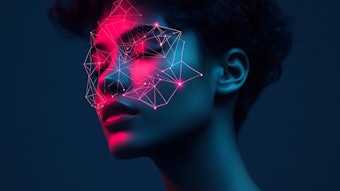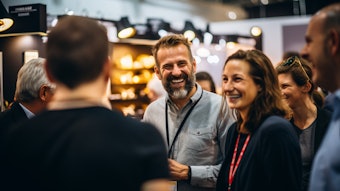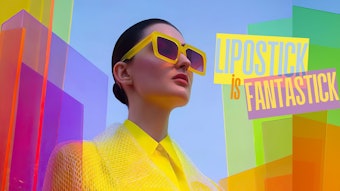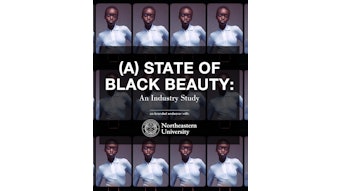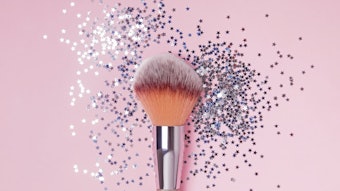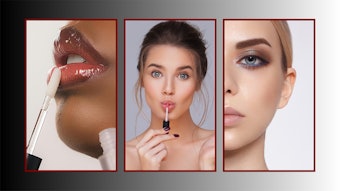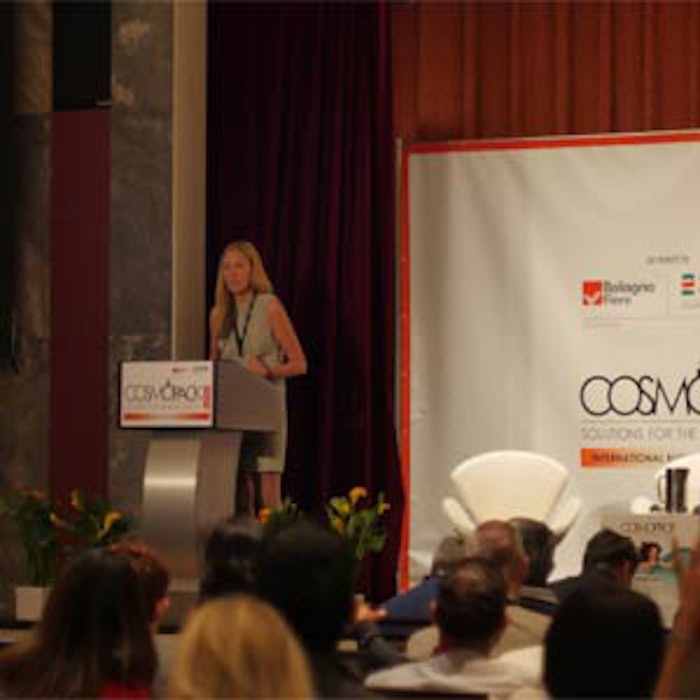
The first edition of Cosmopack International Business Forum & Exhibition in New York hosted 83 buyers comprising brands and retail chains from the North American East Coast, as well as 44 supply chain companies (packaging, raw materials, etc.), primarily from Italy.
Previously: What is the Sephora Shopper Seeking?
The Italian cosmetics industry is dominated by the trade group Cosmetica Italia, which comprises about 500 companies and represents 95% of the Italian industry. Cosmetica Italia president Fabio Rossello told GCI that the Italian industry employs more than 200,000 people, and that its supply chain generates €14 billion euros per year.
Future beauty industry events.
Many international brands are producing in Italy, he said, and as EU growth slows, Italian manufacturers are pursuing new relationships with US-based brands.
Cosmoprof/Cosmopack in Bologna will take place March 17–20/March 18–21, respectively. The event will focus on green products, halal cosmetics, spa products and more. Cosmopack New York will also return in 2016, and of course Cosmoprof North America will be held July 12-14, 2016, in Las Vegas. All event details can be found at www.cosmoprof.com.
The two-day event also hosted a range of talks focused on the future of the beauty industry.
Mass and Niche Retail: It’s all about the Experience
Shen Beauty, a Brooklyn-based beauty boutique with a global fan base, and Walgreens, a drug retailing chain with more than 8,000 stores, couldn’t be more different. During a Cosmopack panel hosted by Pete Born (WWD) and featuring Marcia Gaynor (DMM prestige, global and exclusively owned brands, Walgreens), Jessica Richards (Shen Beauty founder and beauty brand advisor) and Shawn Tavakoli (founder and CEO, Beauty Collection) the experts discussed the divergences and overlaps in their businesses.
For Walgreens, it’s important to offer every tier of products, said Gaynor. This attracts all types of consumers, from beauty junkies to brand-loyal product followers. She noted that consumers like to have choices that allow them to mix it up with both expensive and more budget brands. Gaynor added that today’s consumers demand a good selection, reasonable prices and to trust the retailer.
On the other hand, in selecting products for Shen Beauty, Richards chooses the best SKUs from among brands, rather than taking on the full line, allowing her to tightly curate a collection that speaks to her customers.
But, for both Richards and Gaynor, the emphasis is on providing consumers with an interactive in-store experience, allowing them to touch and interact with products or, in some cases, even try them on. In fact, unlike the book and music retail channels, which have consistently shrunk in the wake of e-tail, Walgreens is expected to expand its retail by building smaller, more intimate stores that fit into consumers’ busy, urbanized lives.
For both Shen and Walgreens, the focus will continue to lie on building relationships and solving consumers’ issues. At the same time, even brands are recognizing the tactile needs of consumers, with online players such as Glossier doing pop up stores to address the desire to touch and experience products and interact with brand experts.
Mass Market and Boutique Insights
- On mass fragrance: Fragrance retail continues to be a challenge, said Gaynor. An open-sell model for fragrances is attractive because it liberates fragrances from glass cases, but it also causes challenges for loss prevention. Gaynor suggested a semi open-sell environment could be the appropriate compromise.
- On exclusive products: Gaynor noted that exclusive products make consumers come to your store. These products can include both exclusive brands and exclusive SKUs within a non-exclusive brand. Retailers can play a role in developing exclusives, particularly if they identify white space for which they currently do not have an SKU. This can benefit both the retailer and the R&D teams behind the brands. Tavakoli noted that it is more critical to have exclusive products than it is to have exclusive brands. At the same time, however, retailers are less interested in being product/brand incubators, taking the financial risk of building a following for an unknown brand. (Though Richards noted that it’s fun to do so.)
- On the future: Organic and wellness products from Australia represent a significant area of focus, said Richards, including ingestible beauty products. For instance, The Beauty Chef offers products such as Glow Inner Beauty Powder and Hydration Inner Beauty Boost. Gaynor added that innovations in masks are an area of interest, particularly brands incorporating ingredients such as charcoal and tar. And, Tavakoli concluded, Asian, particularly Korean, products continue to be popular.
- On newness: It’s easier for retailers to build up from core brands, said Gaynor, though retailers need newness to keep them sufficiently differentiated. Richards said that about half her business stems from consumer loyalty to existing products or brands, but that newness is crucial. Tavakoli added that brands have to introduce new products consistently to remain top of mind, but that each new introduction should fulfill the brand promise.
Finding Your Beautiful: Optimized Individuality
Technologies such as Makeup Genius (L’Oreal) and Color IQ (Sephora/Pantone) are allowing consumers to optimize their beauty product selection and pursue greater personalization of their experience, said Sophie Maxwell (futures director, Pearlfisher).
At the same time, wellness will represent a strong premium for products and brands. Both trends are beginning to intersect, she noted, with some unique and interesting offerings emerging on the market.
For instance, the Olive stress monitor bracelet tracks the wearer’s activity, location, sleep pattern, pulse level, skin condition and other stress factors to generate insights for them to apply to their wellness. This “quantified self” approach is increasingly popular as it allows consumers to independently learn about their own well-being.
As self-knowledge ramps up, beauty is becoming more about self-expression, suiting individual needs and changing styles. This means a move from sleek ideals to expressive individualism, said Maxwell.
This optimizing of individuality includes a message that encompasses the mind and body, whether with confidence, peacefulness or other emotionally charged factors.
This total education of the consumer—both about products and themselves—may lead to growing demand for smart/interactive systems that allow them to personalize their beauty. Color IQ and other technologies allow consumers to navigate hundreds of foundation shades, said Maxwell, while Makeup Genius has proved to be a huge hit in China, driving a new makeup culture where none previously existed.
While Selfridges has launched a customized fragrance lab, at-home 3-D makeup printer Mink has taken consumer-controlled customization to the next level. Moda, from Foreo, combines facial recognition and 3-D printing.
The user selects a look and transmits it to the makeup printer via the Moda app, which will then apply the selected makeup look to the user’s face via a hands-free device that takes just 30 seconds to apply three levels of makeup.
Other brands pursuing unique customization include SkinDNA’s genetic test kits, ModiFace’s virtual makeover app and GeneU’s DNA-personalized skin care.
The future, said Maxwell, will likely have no singular beauty ideal, allowing consumers to create their own ideas about their perfect selves, while creating community around peers who share similar ideals and perhaps buy the same beauty products.
At the same time, consumers will want tailored solutions that offer multifunctionality—perhaps with cross-category functionality.
Speaking with GCI, Maxwell noted that the food industry’s changes, particularly in health, wellness and its focus on ingredients, will be reflected in the beauty and personal care industry. Yet, while consumers have concerns about certain synthetic ingredients, the efficacy of such materials delivers efficacy comfort. This presents both a challenge and a brand opportunity.
At the same time, she pointed out that there is a “democracy of opinion” among consumers, who are looking for something new, something more effective than their current products. As a result, they are experimenting, seeking out the best possible options. This requires brands to keep up with new functionality offerings and telling an authentic brand story.
Experiential Retail and Brands
The next decade is all about the consumer, said Amanda Bopp (Director, Macy’s Consumer Insights & Analytics, dunnhumbyUSA) during a session moderated by Dr. Brooke Carlson (Professor, Fashion Institute of Technology). Increasingly, said Bopp, those consumers are migrating online.
She added that e-commerce is outpacing brick-and-mortar retail growth by a factor of five to one. At the same time, young people are increasingly engaged in social media, where they spend more than five hours of their day.
These consumers are highly experiential and prefer to spend on pleasure over possessions. As a result, overall store trips are down.
So, Bopp asked, how do brands and retailers get consumers off social media and into stores? With experiential retail.
To capture a share of consumers’ time, the lines between experience and brand will be blurred. This is a good opportunity for the beauty segment to reach time-poor shoppers, giving them a much needed time out.
Some retailers are beginning to take space from the selling floor to give consumers a place to relax, like a café or library. Dubbed “slow shopping,” this retail format gives consumers time for themselves, encourages purchases and inspires repeat visits.
Bopp explained that nothing will pay off if a brand or an experience isn’t authentic. The consumer is all about provenance of products and ingredients. They want to know which brands live green and which merely make claims.
Attention-grabbing Luxury
If your brand were a memory, what would it be? That was the question Corey Moran (account director, consumer insights and analytics, Coty) posed during his Cosmopack presentation.
Bopp noted that an expanding global consumer base has boosted the luxury market. Yet Moran explained that there has been a precipitous drop among consumers pledging allegiance to a favorite brand. They don’t care if some brands just disappear. At the same time, attention spans have dropped to about eight seconds.
What will tomorrow’s consumers value? And how can brands capture their attention? By creating connections and, to Bopp’s point, creating experiences that become memories.
These emotionally charged memories can draw from emerging universal values, including family, time and health. This can build consumer intimacy, mindfulness and build brand legacies, Moran noted.
While Bopp explained that brands need to be authentic, Moran noted they also have to be simple. By achieving this “emotional accuracy,” Moran argued, brands can achieve higher satisfaction, lower returns and greater consumer loyalty.
